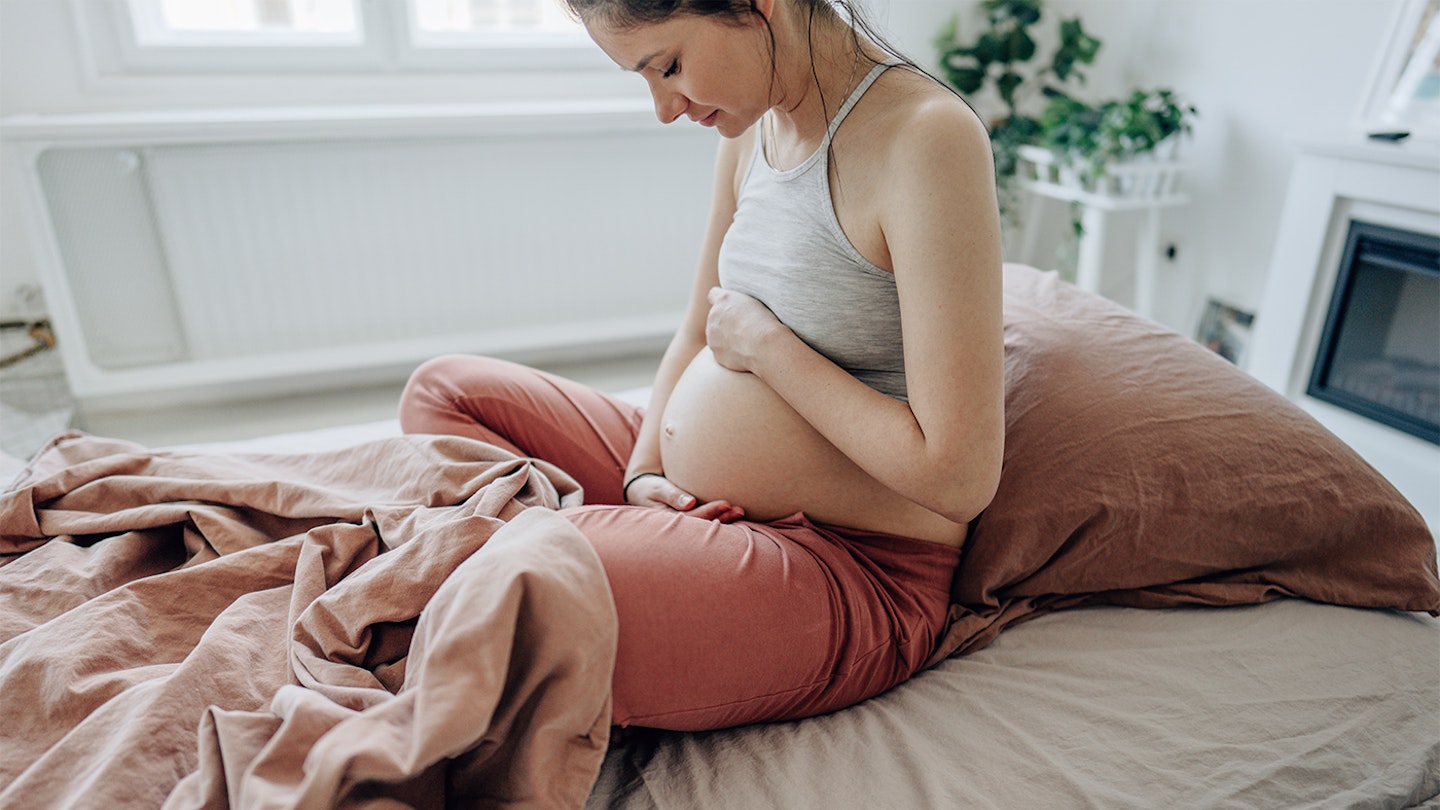You’ve waited 40 weeks for your baby to arrive and the due date is here, but there’s still no sign of your little one. It’s an uncomfortable and frustrating period waiting for an overdue baby and has probably left you desperate to find out how to bring on labour yourself. After all, you’ve soldiered through all the pregnancy symptoms and now you just want to meet your baby boy or girl.
You may be offered to be induced if your baby has decided to stay put a little longer than expected. However many expectant parents are keen to know if there are any natural ways to bring on labour that you can carry out yourself.
While the NHS says ‘there are no proven ways of starting your labour yourself at home’, there are certain theories which are believed to help trigger labour. Again, these are purely anecdotal, but every little helps when you’re desperate to give birth, right?
Here, we share 13 different theories of how to bring on labour naturally, from chewing on some dates to blowing up balloons and even spending a little longer in the bedroom.
A few things to be aware of first:
• Natural induction should only be a helping hand. The method should be gentle enough to ensure you won’t go into labour if your body isn’t ready.
• Induction is not recommended before 39 to 40 weeks.
• Don't stress that you're overdue. Usually, first-time pregnancies are up to 80% more likely to go beyond the due date and you are not officially 'overdue' until 42 weeks. Even then, a doctor cannot legally induce labour without your permission.
• Do your own research, only do what you feel comfortable with and never overstrain yourself. If you're not sure, talk to your doctor, especially if your pregnancy is considered high-risk.
How to bring on labour naturally
1. Use a birthing ball

Using a birthing ball in pregnancy and labour can improve your posture, balance and even help with the slow process that is inducing your labour. Not only is it more comfortable than sitting on a hard, rigid surface when your tummy is the size of a house, using it for gentle exercise can help shift your baby's position and prepare them for labour.
**Birthing ball positions to try:
**
• If your baby is in a posterior (back-to-back) position, adopting upright, forward-leaning positions can encourage him to switch around.
• Try getting onto your knees and leaning forward over your ball. This may encourage your baby's back to swing forward so he's in an anterior position, with his back towards your bump.He may not stay that way until you go into labour, but it should give you some temporary relief from backache.
2. Acupressure
As well as being a morning sickness remedy, acupressure massages can also induce labour. Before you think about booking acupuncture during pregnancy, make sure that your acupressurist has experience working with pregnant women. The whole experience is incredibly relaxing, but more importantly, massaging acupressure points in the ankles and in the webbing between your thumb and forefinger can cause muscle contractions, including in the uterus.
3. Eat basil
Basil is what's called an 'emmenagogue', which is a herb that stimulates blood flow to the uterus and can stimulate menstruation. Throw some in your cooking.
4. Try eating spicy food
Eating spicy foods is a bit of an old wives' tale and one of the most well-known ways to induce labour, but it can work. The reason is because of the upset it causes to the digestive system, which then upsets the uterus. So don't go out of your way to eat a Vindaloo if it's not part of your normal diet. However, mums do attest to the fact that spicy food can work, so it may be worth thinking about as a last resort.
5. Nipple stimulation

Stimulating your nipples is actually one of the most effective ways you can induce labour yourself. Why? Nipple stimulation can cause your uterus to contract. The stimulation releases oxytocin, a hormone that causes contraction. This could be a nice bonding experience for you and your partner to try, or you can always use a breast pump if you're going about it alone. As this has been proven to work quite well, make sure you've told your doctor you are going to try out nipple stimulation before you go ahead.
6. Red raspberry leaf
A lot of mums-to-be ask whether red raspberry leaf tea brings on labour. It can be taken at about 37 weeks as tea or a pill. It's not scientifically proven to help induce you, but drinking it strengthens and tones the uterus. This will hopefully lead to a shorter labour because each contraction is more productive. But don’t be tempted to glug gallons of tea in desperation if you go overdue — it may cause intense contractions and lead to your baby getting distressed. Women are advised to drink red raspberry leaf tea a maximum of three times daily.
7. Chomp on a banana
Bananas are another great way to strengthen the uterus. They contain lots of potassium, which is crucial to muscle contractions. This means that a potassium deficiency could potentially delay labour. But eat bananas in moderation and avoid taking potassium supplements as they can be poisonous when taken incorrectly.
8. Chew on dates
Small-scale studies have shown that eating six dates a day in the final month of pregnancy may encourage your cervix to dilate and therefore reduce the need for induction.
9. Blow up balloons
Got a kid's party coming up? Kill two birds with one stone and get started on blowing up those balloons. This may be another old wives' tale, but the theory is that the build-up of abdominal pressure can get labour going.
10. Have sex

We know the logistics of having sex can be tricky when you hit 40 weeks pregnant, but there is some science behind this one. Sex can encourage the release of the 'love’ hormone oxytocin, a hormone that you need to get labour kick-started. Semen almost contains a hormone-like substance called prostaglandins, which may help to soften and ripen the cervix. Having sex is safe at full term, but you shouldn’t have sex after your water has broken, as it can increase the risk of infection.
It's not just sex that can help either, having an orgasm can also bring on contractions, which is one of the reasons they feel so good. This is also why many women enjoy orgasms more during pregnancy.
11. Swimming
Swimming when pregnant is a lovely way to feel weightless and floaty, a feeling we're sure you're yearning for at the moment. Relaxed swimming can help bring out the baby as both the water and the gentle movement helps. Kate Middleton is rumoured to have gone swimming when she was overdue and trying to bring about the birth of Prince George.
12. Balsamic vinegar
According to the popular What to Expect book, balsamic vinegar can help bring on labour. However, it might not work until you're already dilated. Why not add a dash to your salad?
13. Dancing or skipping
Nothing too strenuous! Just a light boogie around your living room to your favourite song will do the trick. Gently swinging your hips around will make baby think about coming out.
Things to avoid
While there are plenty of things you can try to bring on labour, there are a few things you should avoid completely. These include:
Clary sage
Although some women claim to have had success in getting their labour started with clary sage, there are some risks to using undiluted essential oils and they can cause allergies or severe irritation.
Castor oil
Despite being a traditional way of bringing on labour in the past, castor oil can make you feel sick and there is no evidence that it is successful.
Evening primrose oil
According to The British National Formulary, evening primrose oil should be used with caution in pregnancy as there is no evidence that it is safe in pregnancy or that it is effective in helping kickstart labour.
What if my baby is late?
Try not to fret if your baby is only a few days late as this is normal for a lot of mums-to-be. If you hit 42 weeks pregnant, there is a higher risk of stillbirth but your midwife will discuss with you all of your options for bringing on labour at your 38-week appointment.
You'll first be offered a membrane sweep which will cause your body to release the hormones that start labour, thin the cervix and encourage your baby to be born. If this doesn't happen by 42 weeks, you'll be offered an induction instead.
